In what FISU has named “The Year of Legacy” during its 70th anniversary, the global University Sports Movement has plenty to celebrate – including 20 years of the European University Sports Federation 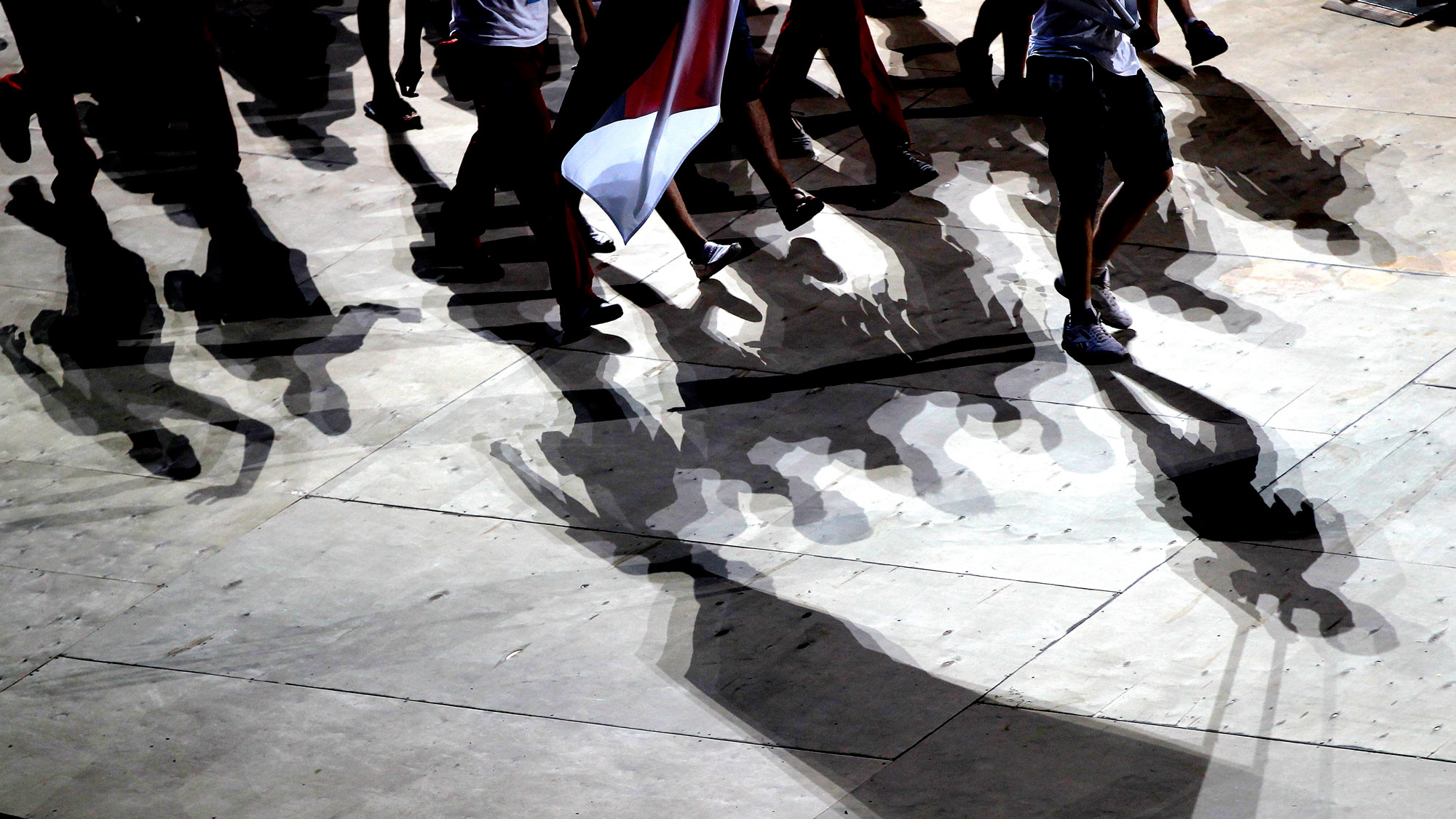
University competitions are among sport’s oldest traditions, with European universities playing a protagonist’s role. A telling example of this is the annual Boat Race – the traditional rowing race between Oxford and Cambridge, which first took place in 1856.
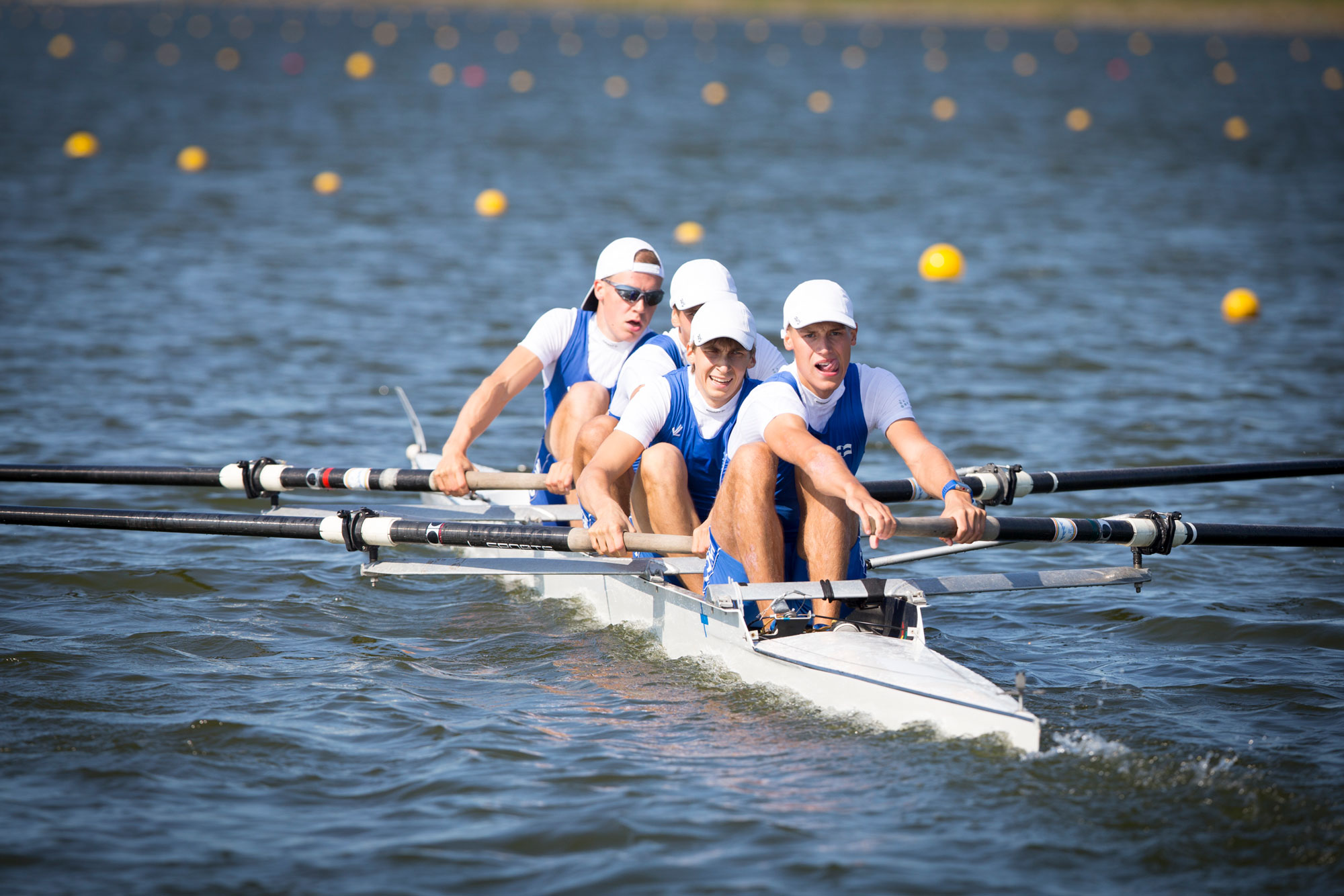 Before the turn of the 20th century, competitive university sport had moved beyond the eight oarsmen driving rowing shells up and down the River Thames. In the years before Baron Pierre de Coubertin brought the modern Olympiad to Athens, schools in Great Britain, Hungary, and Switzerland started holding their first inter-university sports events. National university sports associations emerged soon after, with many European nations having celebrated 100 or more years of service today – on FISU’s 70th and EUSA’s 20th year anniversaries.
Before the turn of the 20th century, competitive university sport had moved beyond the eight oarsmen driving rowing shells up and down the River Thames. In the years before Baron Pierre de Coubertin brought the modern Olympiad to Athens, schools in Great Britain, Hungary, and Switzerland started holding their first inter-university sports events. National university sports associations emerged soon after, with many European nations having celebrated 100 or more years of service today – on FISU’s 70th and EUSA’s 20th year anniversaries.
International sports competitions came later, as young people in Europe sought a brighter and more peaceful future following the First World War. The firebrand of the global university sports movement was the Frenchman Jean Petitjean, who organised the first World University Games in Paris, in May 1923.
The movement started by Petitjean grew as others sought to develop the bonds of friendship that could help maintain a lasting peace after the First World War. From 1924 to 1939, many notable university sporting events were organised. After the 8th International University Games in Monaco in 1939, the Second World War interrupted this great tradition. But once peace returned, Paris symbolically became once again a capital of World University Games in 1947.
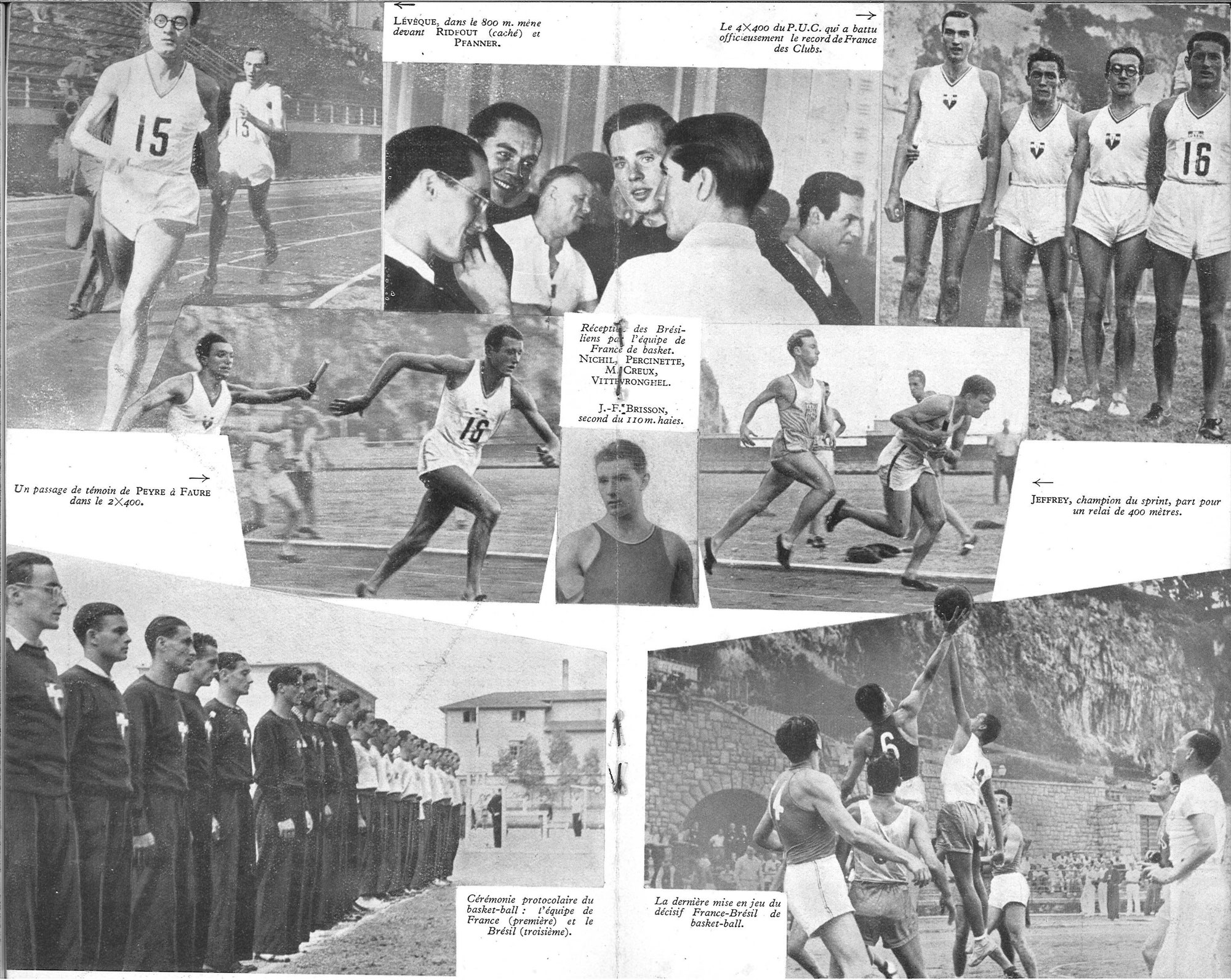 Images from the 8th International University Games in Monaco in 1939. After this event edition, the Second World War would interrupt this tradition until Paris symbolically hosted the event again in 1947.During this time, the era’s sporting visionaries came together to found the International University Sports Federation, FISU, in spring 1949 in Zurich. Created under the impetus of several European countries, the federation looked to rise above the shadow of the cold war that was dividing university sport. They aimed to do this by bringing together students-athletes from all over the world.
Images from the 8th International University Games in Monaco in 1939. After this event edition, the Second World War would interrupt this tradition until Paris symbolically hosted the event again in 1947.During this time, the era’s sporting visionaries came together to found the International University Sports Federation, FISU, in spring 1949 in Zurich. Created under the impetus of several European countries, the federation looked to rise above the shadow of the cold war that was dividing university sport. They aimed to do this by bringing together students-athletes from all over the world.
Italy, Austria, Belgium, Luxembourg, Switzerland, Monaco, and the Netherlands became the founding members of FISU and entrusted the presidency to the Luxembourger Paul Schleimer.
It was here FISU announced its mission: “To promote the cultural aspect of the student body from all countries, to exchange the experiences of university sport, to organise international university meetings and to spread the moral values of sport.”
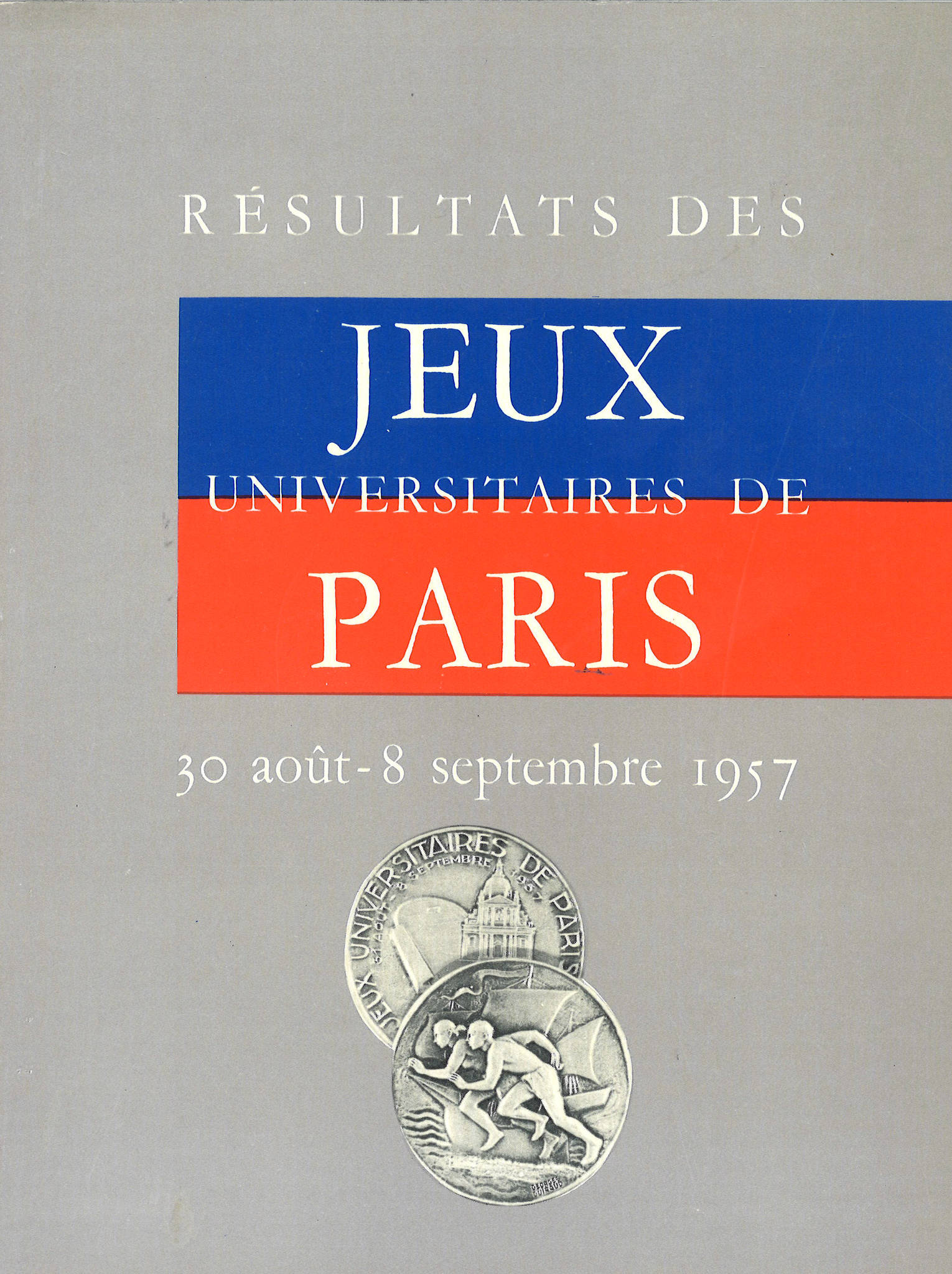 FISU accomplished one of its aims in 1957 when the French National Union of Students organised the World University Games in Paris, reuniting students from across eastern and western Europe under one roof of the athletes’ village.
FISU accomplished one of its aims in 1957 when the French National Union of Students organised the World University Games in Paris, reuniting students from across eastern and western Europe under one roof of the athletes’ village.
Even with the vestiges of time, one can hardly overstate the importance of the first post-war edition of the World University Games. While the event may have changed two years later in Torino, Italy, from the meet in Paris arose the desire for a universal event where student-athletes from all over the world could participate. This led to Torino, Italy, hosting the 1959 event, and since then, FISU has occupied a unique role in enabling and developing international university sport.
The 1959 games were baptised the Universiade, a term that endures today, through 30 summer editions and 29 winter events. The distinctive ‘U’ logo surrounded by stars was unveiled, and a FISU flag bearing this logo began its journey around the world. The Universiade in Torino was a success for the local organising committee, as well as for the man who was to change the future of the university sports movement: Dr. Primo Nebiolo. For nearly forty years, the long jumper from Torino led the international university sports movement.
Today, FISU plays homage to these sporting roots by lighting the Universiade torch before each edition, from the eternal FISU Flame that burns bright inside the courtyard of the Centro Universitario Sportivo di Torino.
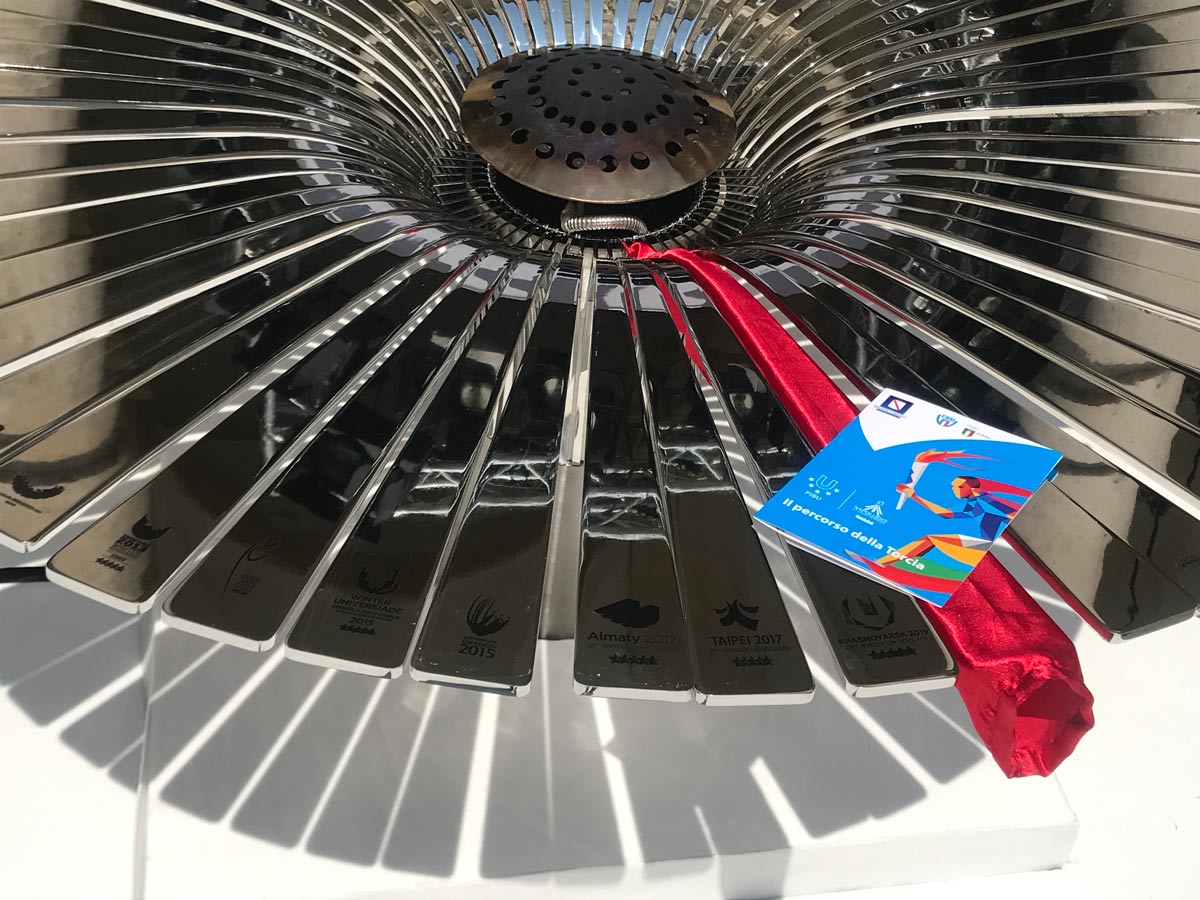 The Universiade Cauldron rests inside the courtyard of the Centro Universitario Sportivo di Torino. Now before each edition of the Universiade, the torch is lit here as the start of the Universiade Flame Relay.
The Universiade Cauldron rests inside the courtyard of the Centro Universitario Sportivo di Torino. Now before each edition of the Universiade, the torch is lit here as the start of the Universiade Flame Relay.
The University Sport Movement’s success can be measured in many ways: the increased reach of the Universiade is one example, with exactly 100 more nations competing at Taipei 2017 than at Torino 1959. Another is the sheer number of sporting opportunities FISU provides, with nearly 400 World University Championships now having taken place. To these must be added the work of our members and continental associations, who combine to provide a myriad of events each year.
European member federations have played a leading role in the FISU’s initiatives. When FISU launched the International University Sports Days, it was Macolin, Switzerland hosting the first event. When, in 1961, FISU expressed interest in organising regional championships by sport, France hosted the first European University Championships in judo while Lund, Sweden, is home to the first-ever World University Championships when they held the handball event.
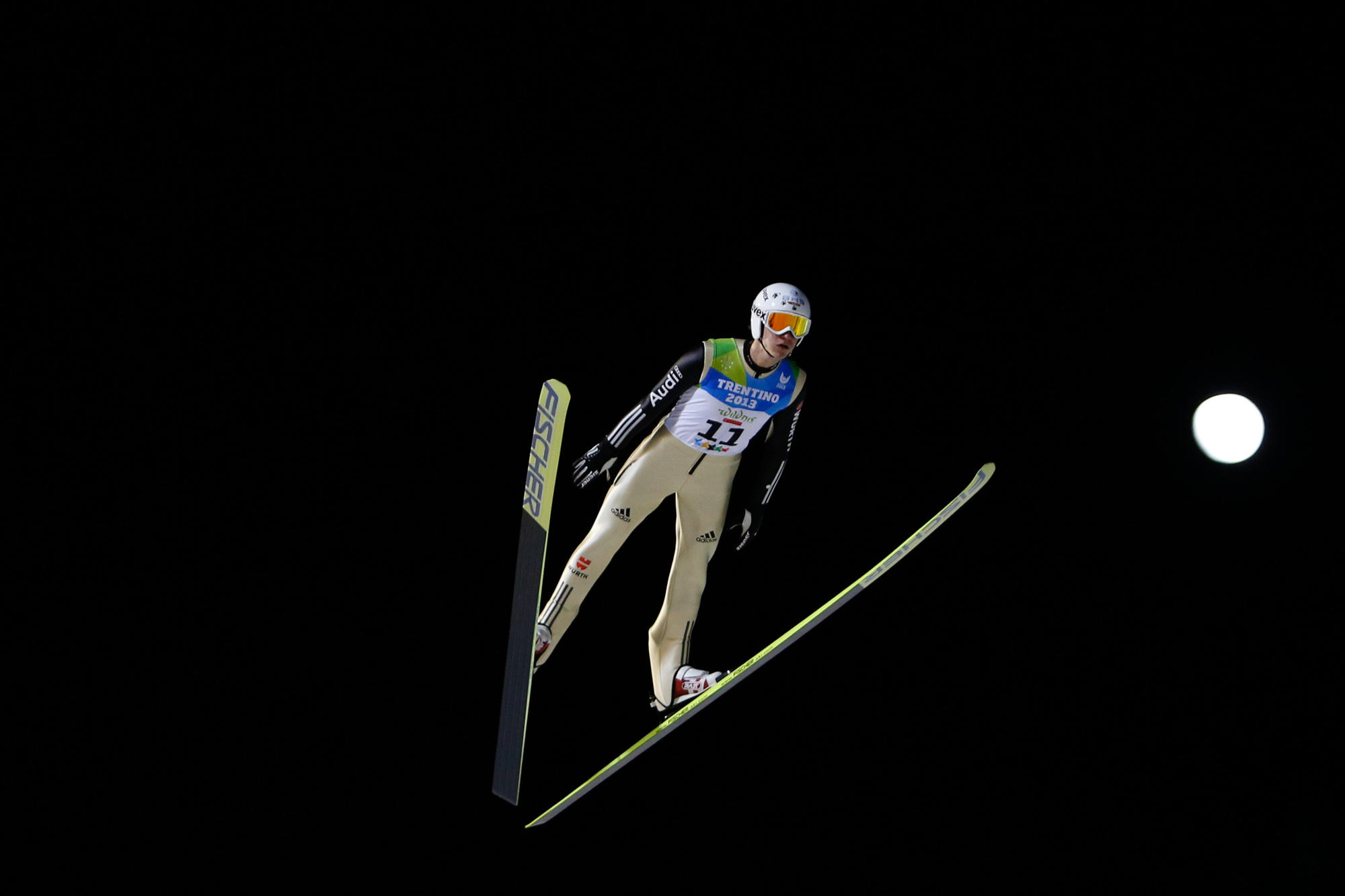 The 1960s also saw the emergence of the Winter Universiade, with Chamonix, France hosting the first edition at the start of the decade. Since then, there have been 28 more Winter Universiades, many taking place in Europe.
The 1960s also saw the emergence of the Winter Universiade, with Chamonix, France hosting the first edition at the start of the decade. Since then, there have been 28 more Winter Universiades, many taking place in Europe.
Since the 1960s, FISU expanded its networks onto six continents. As FISU President Nebiolo personally championed the cause of university sport in places such as Brazil, Cuba, Japan, and the United States, he could do so knowing the strength of FISU’s European members.
FISU’s role is widely acknowledged within the global sports movement. A vital example of this is FISU’s recognition by the International Olympic Committee (IOC) in 1961. Thanks to this tight-knit relationship, the Olympic flag flies over each Universiade. The five rings flying overhead indicate the university sport’s role as a vital training ground for so many Olympians. Athletes, International Sports Federations, and National Olympic Committees have all developed a clear understanding of how FISU’s competitions provide a genuine test of ability, allowing performances to be measured against the best in the world.
With the Olympic Movement looking to enhance the ways they keep athletes at the heart of the Games by offering career-development and educational services, the FISU-IOC bond has strengthened even further. This was evidenced by FISU President Oleg Matytsin’s appointment to the IOC Education Commission. Bringing together experienced and respected leaders active in the world of sport and education to support the Olympic education strategy, the FISU President brings strategic direction to the commission on how the IOC can best encourage education of youth through sport.
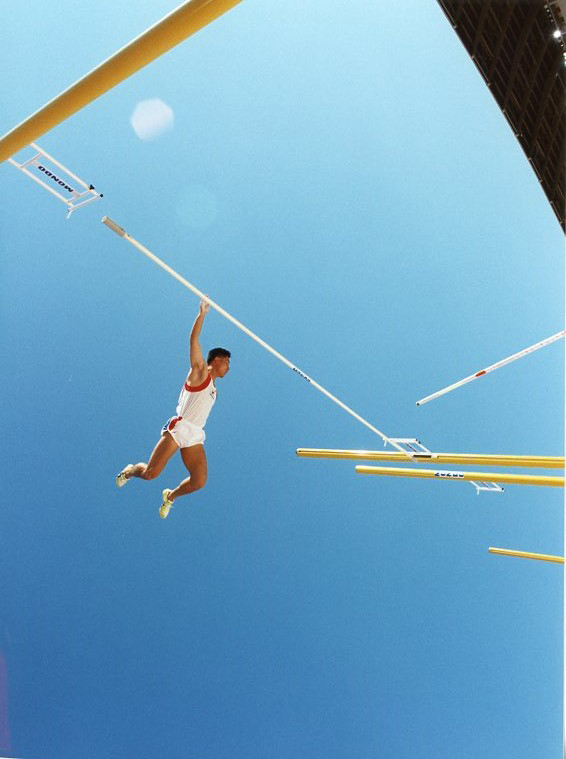 A pole vaulter comes back to earth during the 20th Summer Universiade in Palma de Mallorca, Spain
A pole vaulter comes back to earth during the 20th Summer Universiade in Palma de Mallorca, Spain
The commission is chaired by Barry Maister, who came to witness the university sport’s educational arm at the 2018 FISU Forum. “Athletes are part of the movement,” Maister said during an interview with FISU Media at the event’s fourteenth edition. “And there is an obligation on the IOC and FISU to help them in career opportunities beyond sport.”
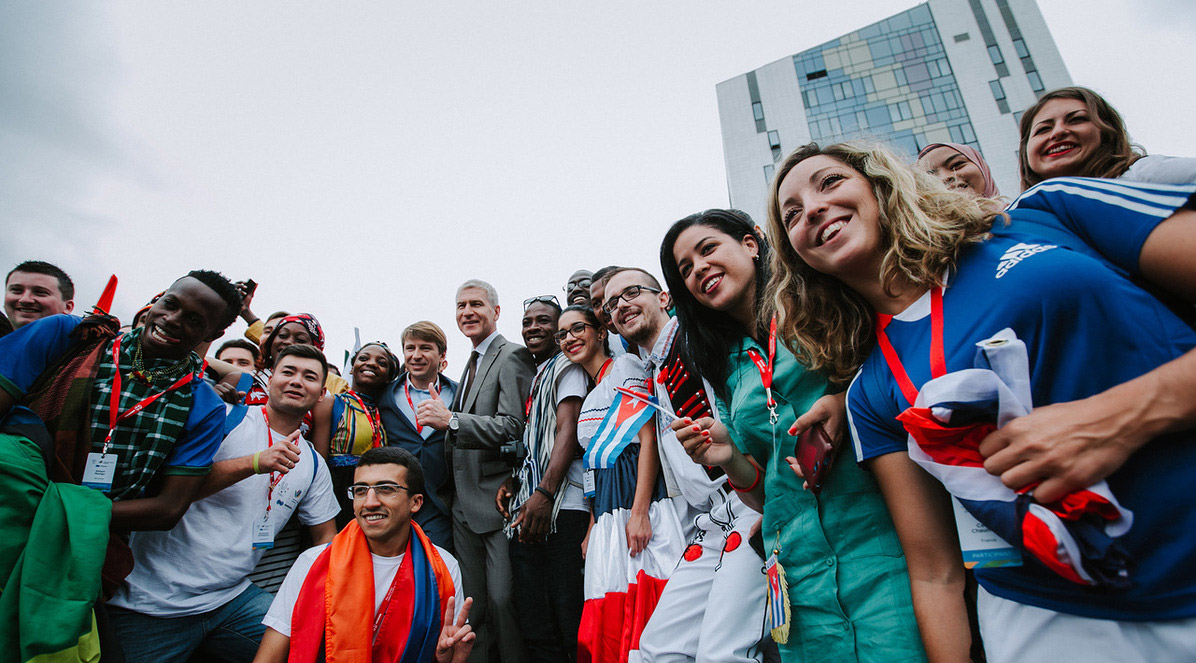 Events like the FISU Forum and FISU Volunteers Leaders Academy showcase the educational side of student-athletes. With 14 editions since the first FISU Forum in Pavalimni, Cyprus in 1992, the event brings together FISU’s member associations outside of gamGiven its role as the Olympic Movement’s body for university sport, and serving as a conduit to almost 25,000 university campuses around the world, FISU has a great deal to contribute in this area.
Events like the FISU Forum and FISU Volunteers Leaders Academy showcase the educational side of student-athletes. With 14 editions since the first FISU Forum in Pavalimni, Cyprus in 1992, the event brings together FISU’s member associations outside of gamGiven its role as the Olympic Movement’s body for university sport, and serving as a conduit to almost 25,000 university campuses around the world, FISU has a great deal to contribute in this area.
“I am very grateful for this wonderful opportunity, and I look forward to representing FISU in contributing even more to the development of the Olympic Movement,” FISU President Matytsin said in welcoming his IOC commission appointment. “The synergy between higher education and Olympic sports continue to grow, and we at FISU are committed to the continuation of this partnership.”
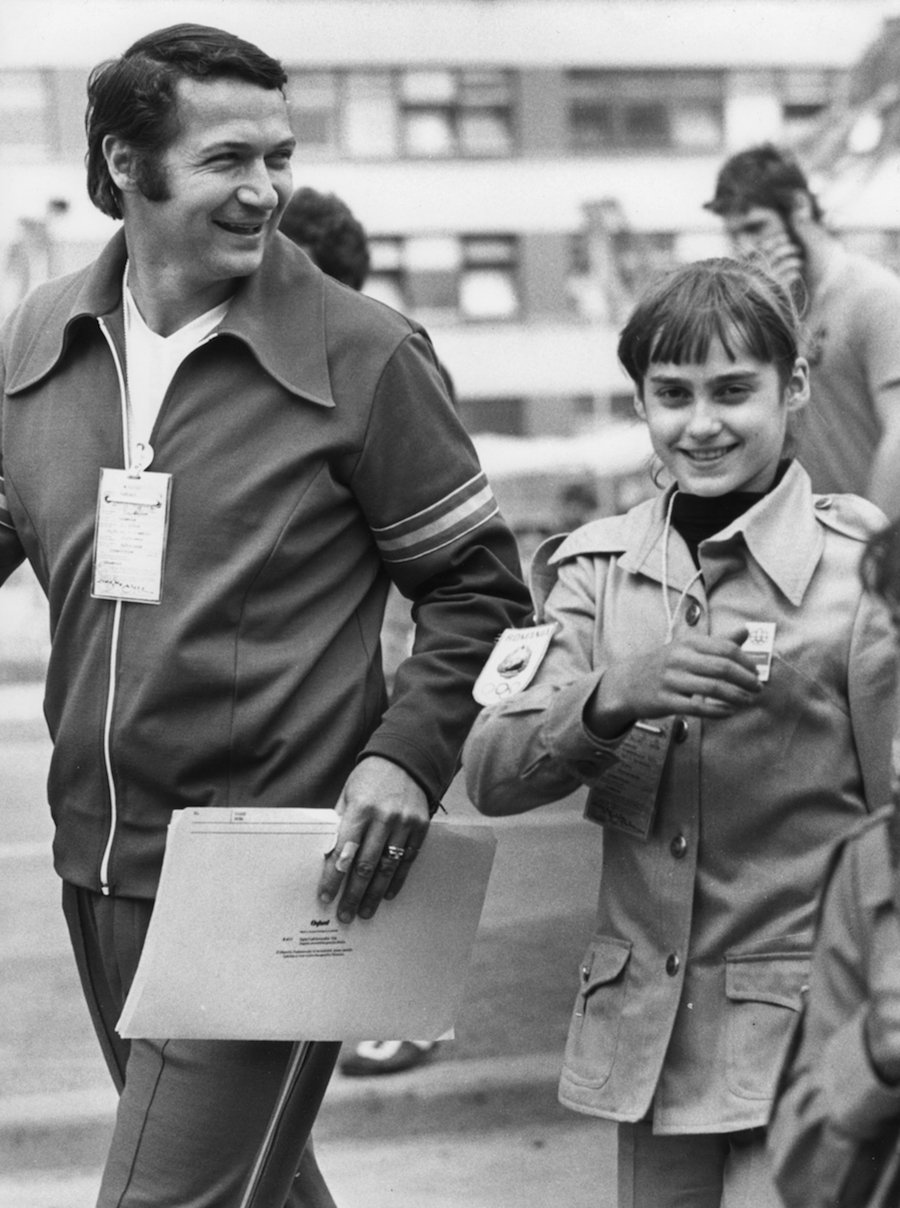 A portrait of an Olympic and Universiade legend in her prime: Romanian gymnast Nadia Comaneci with first coach Béla Károlyi
A portrait of an Olympic and Universiade legend in her prime: Romanian gymnast Nadia Comaneci with first coach Béla Károlyi
From visionaries to sporting structures, it comes back, as it always does, to the student-athletes on campus and the field of play. Fortunately for FISU and its member associations, there is no well more plentiful for sport than the one that springs from the university ranks.
It makes sense, then, that so many of the world’s leading athletes now compete in the Universiades, World University Championships, and University World Cups. Much of this has to do with the way universities and student populations themselves have changed since FISU’s inception. In the 1940s, the university experience was something only a limited few had access to. Consider that in the USA in 1949, the same year of FISU’s formation, just six percent of the population had a university degree. During FISU’s lifetime, this number has multiplied to thirty-four percent.
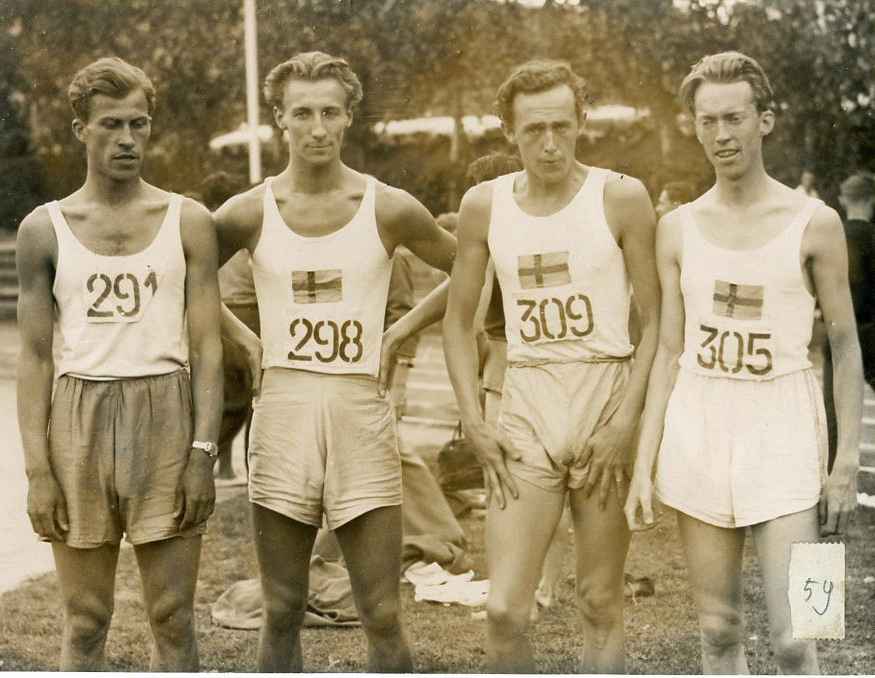 Scandinavian distance runners from the Paris 1947 World University Games. Since the late 1940s, the number and percentage of university students – and Universiade competitors – has grown exponentially.
Scandinavian distance runners from the Paris 1947 World University Games. Since the late 1940s, the number and percentage of university students – and Universiade competitors – has grown exponentially.
As universities have increased in scope and scale, with improved ways of working, so too have FISU and its members. FISU has grown to handle a previously unimaginable capacity. Indeed, the FISU administration of today would be unrecognisable to its founders. Trained, experienced and proven young sports professionals administer a vast programme of competitions involving top-level athletes and sports that, in some cases, did not even exist 60 years ago!
Throughout these past seven decades, and regardless of societal change, the two most important FISU principles have remained. The first is that university students go on, in disproportionately high numbers, to become leaders in government, in business and their communities. The second is that the values and experience of sport remain uniquely suited to positively influencing students on their paths to leadership. These two combine to provide FISU’s continued reason for being.
FISU’s ability to positively impact the leaders of tomorrow through their experiences of international university sport remains the criteria against which we measure our performances. And like the athletes we serve, FISU continues to look for ways to move ahead faster, higher and stronger. Working hard towards a brighter future remains the best way for us to show our respect for FISU’s rich past.
